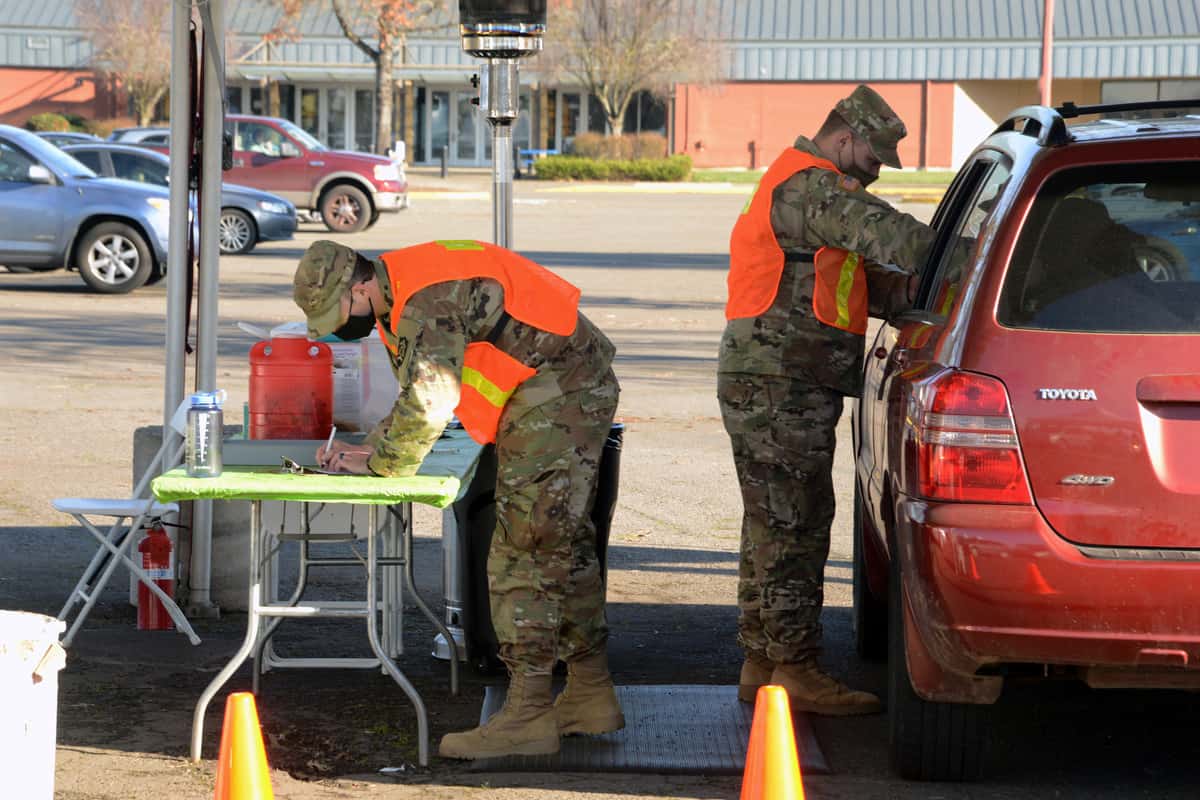The process for sharing data about COVID-19 vaccine distribution is something of a Rube Goldberg machine, and the disconnect between the federal government, states and vaccine administration sites is slowing the vaccination campaign.
The Centers for Disease Control and Prevention lists six different software systems used to track vaccine administration and distribution. That doesn’t include the dozens of separate immunization information systems, which are records of vaccinations for individuals, operated by each state.
Some of these systems have been around for years. Since 2010, states have used a system called VTrckS to order immunizations for children, as well as flu shots and other publicly funded vaccines. Now, states are using the same system to order coronavirus vaccines.
States normally order about 80 million doses of vaccine through VTrckS each year. So far, the CDC has already delivered more than 70 million doses of COVID-19 vaccines.
Other data-tracking systems were developed more recently. Earlier this year, the federal government tapped the consulting company Deloitte to build a piece of software called the Vaccine Administration Management System. It was designed to streamline the process of ordering vaccines, scheduling appointments and sharing data with state and federal agencies.
The software is free to states, but many vaccine sites are choosing alternatives because it has experienced numerous problems.
The Tennessee Department of Health decided not to use the VAMS platform because it was still under development as the state was planning its vaccine distribution strategy. Instead the state is using its immunization registry, TennIIS, to collect information about vaccine administration. That has made sharing data very complicated.
“Information recorded to TennIIS is transmitted to the CDC. TennIIS does not, however, communicate with Tiberius, which is the tool provided by CDC to plan vaccine allocations,” health department spokesperson Bill Christian wrote in an email. “This means allocations are planned in Tiberius, then downloaded and manually entered into TennIIS, then downloaded and uploaded to the VTrckS system to place the orders.”
Rob Handfield, the executive director of the Supply Chain Resource Cooperative at North Carolina State University, said it would make more sense to have a single, national system that allows states or vaccines sites to communicate with each other about their inventories and needs. Without that kind of communication, he says the vaccine distribution is blind.
“Running a supply chain without data is like driving your car down the street without a speedometer or a GPS,” he told FreightWaves. “That’s what it feels like they’re doing. They really aren’t tracking what’s going on.”
In a recent blog post, Handfield presented India as a potential counterexample to the U.S. The Indian government is planning to use a single application to manage the country’s vaccine campaign. Indian government officials say they’re already using the system, but the app isn’t available to the general public so it’s still unclear if it will work as planned.
The U.S. has tried this kind of thing before. The Childhood Immunization Initiative Act of 1993 was supposed to create a national immunization registry, but instead that funding went to states to support their own registries. According to the American Immunization Registry Association, needs varied widely from state to state and it was difficult to create a system that satisfied everyone.
Bill Brand, the director of public health informatics strategy at the Public Health Informatics Institute, said a nationwide IT system for managing COVID-19 vaccine distribution would be more efficient.
But the same hurdles that derailed a national vaccine registry would have made it difficult to build a national IT system for COVID-19 vaccine distribution. He said the main obstacles aren’t technological, they’re regulatory and cultural.
“Certainly the technology exists to do this. If we were a different kind of country we would have single nationwide IT systems for all this kind of stuff. But in fact we were intentionally set up to be very federated,” Brand told FreightWaves. “Generally speaking in America we’re willing to accept some of that inefficiency and frustration for the sake of maintaining local control.”
Several states, such as Florida, California and Arizona, had to conduct a legal review before sharing immunization information with the federal government. Vermont law prohibits sharing personally identifiable information with the CDC. The state can only share summary statistics.
In addition to those legal hurdles, Brand said that the federal government just didn’t have enough time to create a new IT system for the vaccine rollout. Rather than attempting to build a national system, he said the U.S. should have focused on bolstering the existing systems that public health care workers were already used to.
“For all the money … spent developing new systems, they could have probably fixed an awful lot of the issues with existing systems,” he said.
Two months into the vaccine rollout, he said it’s too late to build the perfect system and the U.S. should instead make incremental improvements to the current IT systems.
“Switching horses midrace is pretty disruptive to everybody,” he said.
Despite the inefficiencies, states are getting better at using the current Rube Goldberg-like system. The rate of vaccinations in the U.S. has increased steadily since mid-December, and the federal government is taking steps — such as doling out vaccines in pharmacies and invoking the Defense Production Act — to speed it up further.
Neither Brand nor the American Immunization Registry Association sees a nationalized IT system for immunizations on the horizon. Brand said many Americans are still uncomfortable sharing that kind of personal information with the federal government.
Still, he believes the public health system will come out of the COVID-19 pandemic stronger.
“Public health officials are continually asking themselves, what are we learning from this to be better prepared the next time,” he said. “What changes? What enhancements are we making now that will support us in all our other public health work?”











